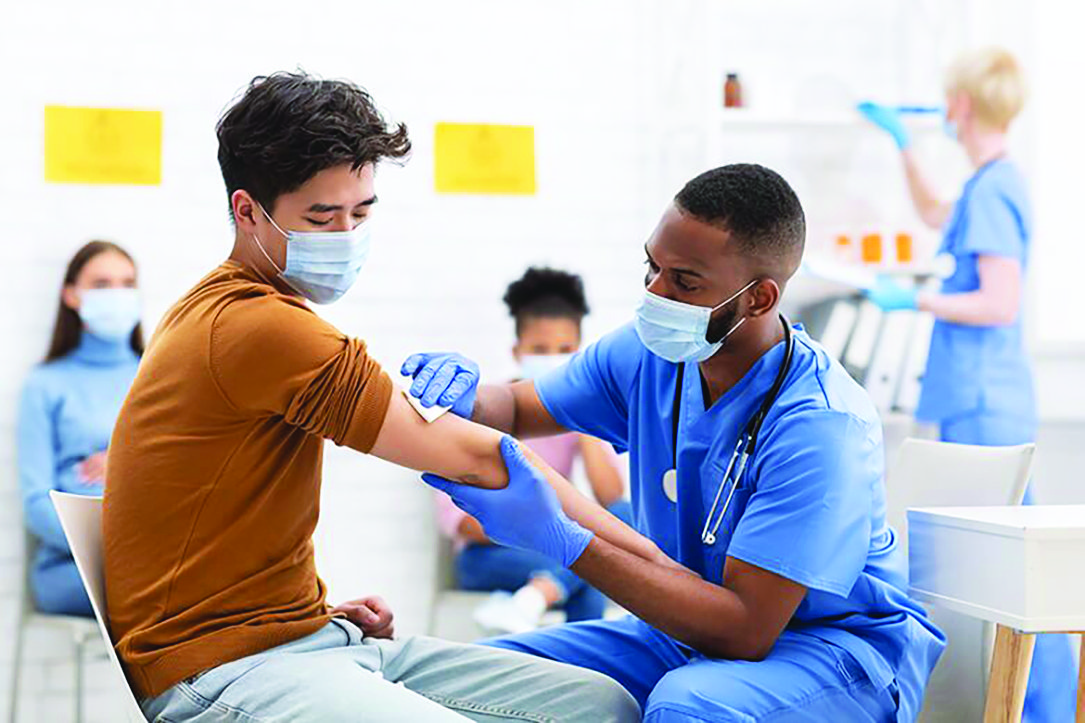Vaccination data across the country shows high rates, but concerning new data points signify a shift in vaccination efficacy in the US.
The falling vaccination rates are steeper than expected.
There are now gaps in protection against once-common diseases that can lead to hospitalization and life-threatening consequences are widening.
Due to these vulnerabilities, numerous areas in the U.S. now have pockets of students no longer ensured with near-failproof protection through herd immunity.
Because while the overall childhood immunization rates remain high on average, the numbers hide the sharp declines within smaller communities — in numerous states, counties and school districts. And if the figures continue to drop, the risk of outbreaks of life-threatening diseases in children is bound to rise.
Throughout their implementation in history, vaccines have been proven time and time again to be effective deterrents to infectious diseases. And because of them, the diseases of the past — namely measles, mumps and smallpox — have been essentially eradicated.
Before the pandemic erupted across the world in 2020, the rate of kindergartners with complete records for the measles vaccine was above the federal measles target of 95 percent. However, recent data from the Centers for Disease Control and Prevention shows that this number has dropped to below 93 percent by 2024. Immunization rates against polio, whooping cough and chickenpox decreased in a similar manner.
According to school nurse Julie Doerge, this decline stems from external factors beyond the control of ordinary citizens.
“During the pandemic, families had a much harder time making sure that their kids were up-to-date with their vaccines,” Doerge said. “With limited access to healthcare, parents weren’t really able to schedule appointments and go and see their physicians to ensure their kids got vaccinated.”
The decrease in nationwide vaccination rates also highlights another growing concern: the issue of taking booster shots. When people skip or delay the recommended number of booster vaccines, they risk weakening their immunity against certain diseases. Skipping immunizations doesn’t just affect that one individual — it shifts the balance of risks and benefits for everyone.
“If you get your vaccine when you’re 5 or 6 years old and never get a booster shot, you wouldn’t be as protected as you would be if you did receive it,” Doerge said.
Even though vaccines are widely recognized for their reliability in viral protection, a small percentage of the population still remains doubtful of receiving an immunization. Specifically in school environments, parents have voiced concerns over vaccines for a variety of reasons that include safety, effectiveness and personal experiences.
“Some parents don’t really know why they are skeptical about letting their kids get vaccinated in the first place, but they have heard in the press that they should be,” Dr. Kimberly Mehendale said. “Other times, some believe that the diseases for which we vaccinate are not very prevalent, so their children are at a minimal risk of contracting these diseases.”
This distrust in vaccines, however, lacks a nuanced perspective. Although the U.S. is almost entirely protected from severe diseases, millions of immuno-compromised civilians’ lives are at risk.
Furthermore, these safety hazards supersede our nation’s borders and impact communities all across the globe.
“Having the majority of the U.S. immunized is most important for people whose immune system is not fully functioning such as babies, elderly and the sick,” Mehendale said. “Some people who are skeptical of vaccines have never actually seen firsthand how severe and crippling these diseases really are.”
These exact assumptions have directly led to numerous flare-ups across the nation. From Oct. 22 to Dec. 24 of 2022, a measles outbreak occurred in central Ohio that spread throughout numerous schools. 85 infants and toddlers were infected. And out of those 85 children, 80 were unvaccinated.
Although such outbreaks are uncommon, these events can serve as wake up calls for low immunization rates — one skipped vaccination could be the catalyst of another incident.
To avoid such spikes, the school implemented several vaccination mandates for faculty members in 2018, requiring them to be up-to-date on their TdaP (tetanus, diphtheria and pertussis), hepatitis and MMR (measles, mumps and rubella) vaccines.
“The reason for this was that there was an outbreak of measles up in Plano,” Doerge said. “And at that time, we had the Director of Health and Human Services from Dallas on our medical committee, and she recommended that we get all the information for our faculty.”
For Doerge, raising vaccination rates against once-common childhood diseases goes beyond simply having more access to them. It’s also about education and outreach — ensuring that people in the community are well-informed. By bridging the gaps in awareness and fostering an understanding on vaccines with new families at school, the clinic strives to achieve this sense of trust and ultimately protect all members on campus.
“We educate people one-on-one when they come in,” Doerge said. “We also refer people to their providers because they do an amazing job helping new parents understand the importance of vaccines and why we encourage all people to get them. After talking with people one-on-one, they understand and are happy to get their vaccines.”








